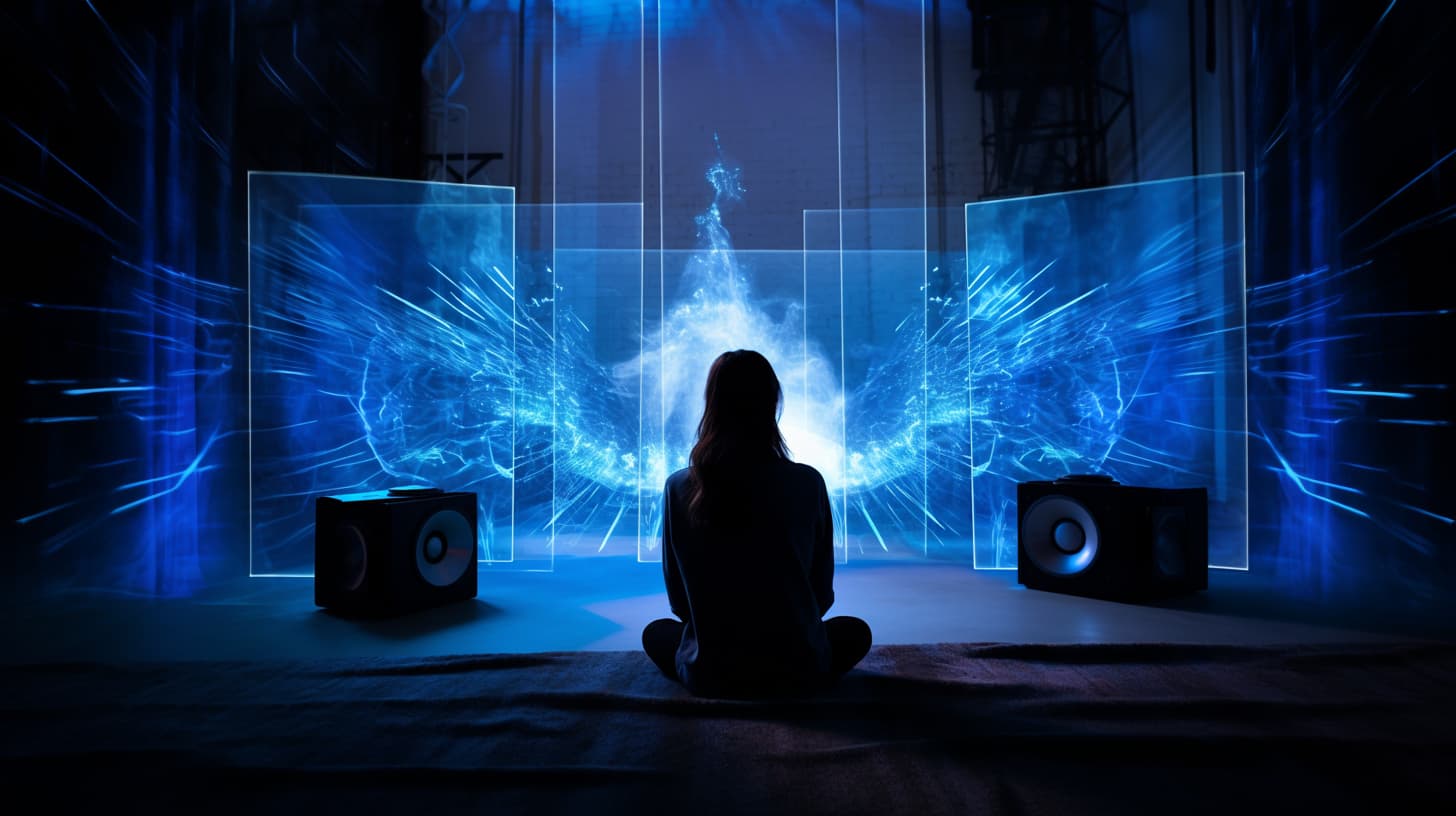
Transaural audio: Binaural sound for loudspeakers?
Content
Transaural audio is a very interesting technology that kind of blew me away when experiencing it at an Audio Engineering Society event. It aims to deliver a binaural, three-dimensional sound field through two loudspeakers instead of headphones.
Binaural signals on loudspeakers? Sounds like a no-no, but it works when done right to the listener’s head.
The technology leverages advanced crosstalk cancellation algorithms to ensure that each ear hears only the sound intended for it. This allows the listener to perceive audio cues like distance, direction, proximity, and elevation, thereby replicating a lifelike sound environment.
Challenges in experimental results
Transaural stereo is all about using two speakers and making sure that what comes out of the left speaker goes only to your left ear, and what comes out of the right speaker goes only to your right ear.
This is easy to achieve for headphones. But within a loudspeaker system, you always hear a little bit of the left speaker on your right ear and vice-versa.
- Sound from the left speaker to your left ear.
- Sound from the left speaker to your right ear.
- Sound from the right speaker to your left ear.
- Sound from the right speaker to your right ear.
Sound pressure can be measured on the listener’s other ear. Therefore we create a little inverse matrix for an improvement of presented audible experience. So you create a counter signal, which cancels the little bit that arrives on the ear, which should not have arrived.
So on the left ear mainly the left channel arrives, and unintentionally something from the right channel. The inverse matrix provides a third signal, which minimizes the unwanted second signal.
The result is two-channel surround sound that can be played through loudspeakers, expanding the possibilities for immersive audio in various contexts. While this technique is effective within a limited “sweet spot”, it can present challenges in maintaining the effect when the listener moves around.
This is where adaptive CTC comes into play as used within the Razer Leviathan soundbar system. Read more about the Soundbar with Spatial Audio.
Difference compared to binaural signals with head-related transfer functions
At first glance, binaural and transaural audio may appear to be birds of a feather, and it’s not uncommon for them to be confused due to their shared emphasis on creating immersive auditory experiences. Both technologies seek to replicate the way we naturally hear sounds in the real world, for example, and they share certain foundational elements.
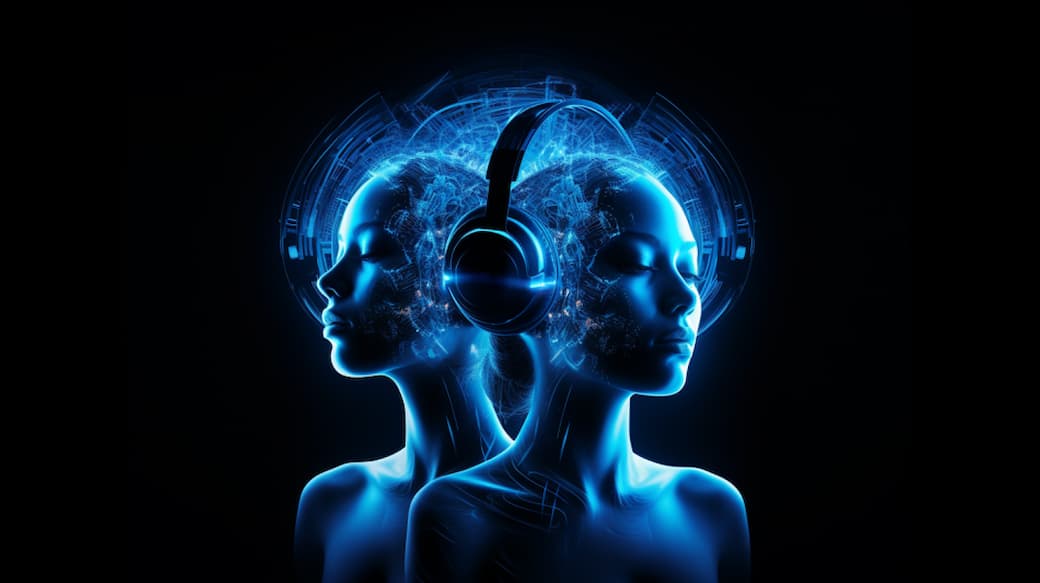
Binaural audio revolves around the concept of capturing sound using a pair of microphones placed in the ears of a listener or a dummy head, mimicking the precise way sound enters our ears.
But in recent years a lot of tools came out that virtually create a binaural signal with any sound source. It is renowned for its ability to recreate three-dimensional soundscapes when heard through headphones.
Transaural audio, on the other hand, delves into the art of spatial audio reproduction but doesn’t make use of headphones. Instead, it employs various techniques of synthesis and signal processing to create the illusion of three-dimensional sound through regular stereo loudspeakers.
Special case Netflix Spatial Audio
Netflix Spatial Audio Sennheiser AMBEO 2-Kanal is a new 3D sound service developed in collaboration with Sennheiser’s Ambeo technology. This innovative idea in 3D audio seeks to ensure that any Netflix content can be enjoyed in an immersive, enveloping experience.
Unlike other 3D audio formats, Netflix Spatial Audio requires no special hardware or headphones, making it accessible to everyone. By using transaural and binaural audio in one file, an immersive experience is created without additional reverb or space.
Dialog integrity and a solid mix are maintained by the algorithm, while the surround channels are given a much greater sense of spaciousness.

In fact, this is a combination of transaural and binaural audio accessible to millions of users. Actually, a nonstarter to simply mix binaural and transaural, but this nicely shows how the lines between headphones and speakers are blurring.
If you want to know more about Netflix’s approach to Spatial Audio read about the magic behind Netflix and AMBEO Spatial Audio.
Otherwise let’s continue with what makes soundbars a game-changer.
What is Cross talk cancellation?
In the realm of transaural audio, the pursuit of sonic perfection extends to every nuance of auditory perception, and one critical element in this quest is crosstalk cancellation. But what exactly is crosstalk?
In audio, crosstalk refers to the unintended spillage of sound from one channel into another, which can distort the spatial perception of audio sources. In the context of transaural audio, where the recreation of three-dimensional soundscapes is the ultimate goal, crosstalk can be a formidable adversary.
Its presence can disrupt the precision of sound source localization, making it challenging to immerse listeners in a convincing 3D auditory environment.
The Importance of Crosstalk Cancellation
In the world of transaural audio, where the goal is to transport listeners to virtual realms and offer experiences that mirror reality, crosstalk cancellation assumes paramount importance. The reason lies in the intricacies of human auditory perception.
Our brains are incredibly adept at discerning the direction from which sounds originate, relying on subtle differences in timing and intensity between what our two ears hear. Crosstalk disrupts this delicate balance.
Imagine listening to a symphony orchestra through headphones and hearing the violin section faintly in your right ear when it should be coming from the left. This incongruity would instantly break the illusion.
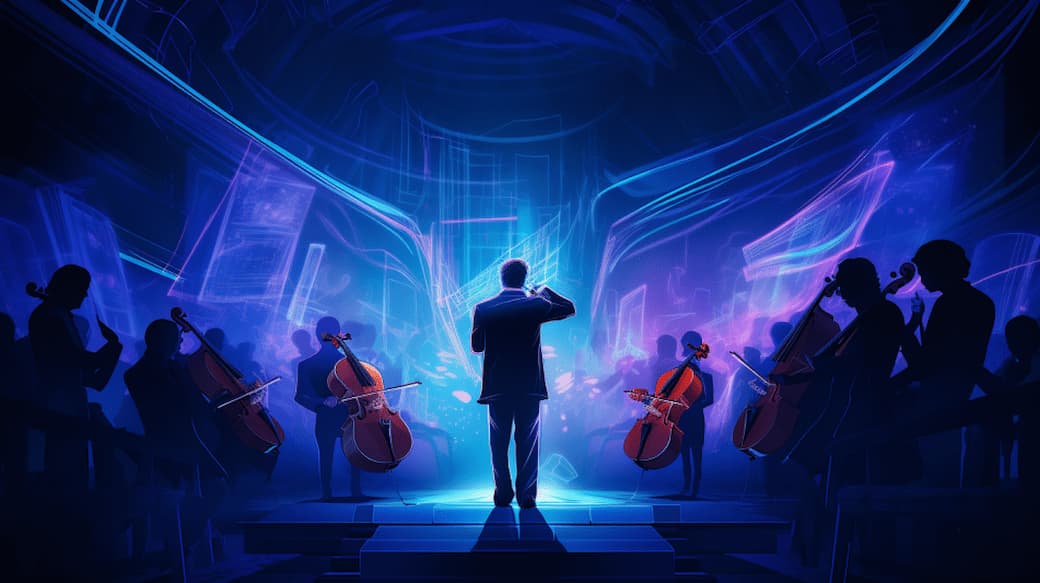
But it is not quite that simple. Because said example is only valid for an anechoic chamber. But in reality, we never really have a sound in only one ear. Due to wall reflections and bone sound, something still arrives on the ear that is completely turned away from the sound source.
This is exactly what makes the räulmiche hearing, but also so complex
How CTC works for the listener’s ears
Crosstalk cancellation in transaural audio is akin to the sorcery of the auditory world, relying on a blend of science and advanced technology to achieve its feats. It’s like a magician’s trick where the illusion of spatially accurate, sound images is maintained effortlessly. But behind the curtain of sound images, the mechanics are far from simple.
These techniques often involve complex algorithms that meticulously analyze the audio signals in real-time. Moreover, digital signal processing (DSP) plays a pivotal role in isolating and subtracting crosstalk from the audio mix.
One of the key ingredients in this magical recipe is the use of head-related transfer functions (HRTF). These transmission functions are like the fingerprints of our two ears together, capturing how sound interacts with our unique anatomy.
By applying HRTF data, transaural audio systems can precisely calculate how sound should reach each ear, ensuring that the auditory illusion remains intact.
In essence, crosstalk cancellation is a symphony of mathematical precision and technological innovation working in harmony to provide listeners with the illusion of sound sources emanating from distinct and precise locations.
It’s this meticulous attention to detail that allows transaural audio to transport us to new dimensions of auditory reality, free from the distractions of unintended crosstalk signals.
Pros, Cons and Conclusion of CTC
By eliminating the interference caused by crosstalk, CTC ensures that audio sources are precisely positioned in the soundstage, allowing us to perceive sounds as if they were emanating from their intended locations.
This spatial accuracy is pivotal for creating immersive and realistic auditory environments in virtual reality, gaming, and music production.
One notable hurdle is the complexity of implementation. CTC systems require advanced algorithms and precise calibration methods to function effectively. Calibrating models for individual differences in head and ear shapes can be time-consuming and may require specialized equipment.
As we continue to explore the limitless possibilities of transaural audio, CTC remains a beacon of innovation, guiding us towards ever more extraordinary auditory horizons.
Plugins to use transaural techniques
Start for free: Transpanner – 3D audio panning. Transpanner operates on a ‘pay-what-you-want’ model as part of our commitment to accessibility and inclusivity in the audio production community. This approach acknowledges the differences in how such tools are employed in practice and their limited influence in certain scenarios.
While the impact of such contributions is rarely realized, it remains an essential part of our presentation and functions, driven by the underlying principles of inverse filtering and virtual responses.
Alternative: Transpan. Accomplished research paper. Transpan is a research-driven binaural and transaural mixing engine developed through collaboration between IRCAM’s “Acoustic and Cognitive Spaces” team and the National Conservatory of Music and Dance in Paris.
The research paper aimed to enhance the quality and precision of crosstalk cancellation for binaural signals, making them suitable for professional production while also integrating them with traditional panning attenuation and transaural techniques. It aligns closely with the Bipan project and was part of the BILI project (Binaural Listening).
Go Professional with BACCH Labs:
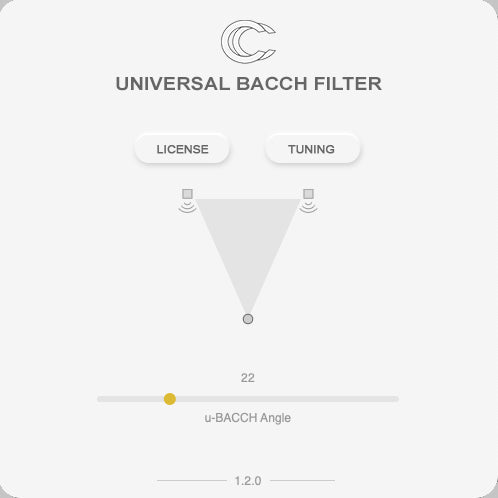
Developed at Princeton University, BACCH Labs 3D Sound is a patented stereo purification method that is leaps beyond other technologies.
Unlike conventional crosstalk cancellation systems, BACCH 3D Sound introduces zero tonal distortion, coloration, or dynamic range loss, resulting in a massive dimensional change to the soundstage with no penalty.
Better yet, this advantage occurs without up-mixing or remastering, and rather lets you hear the imaging, depth, ambience, and immersive qualities already present in the recording or mix, movie, or game environment.
How does the u-BACCH plug-in work?
u-BACCH as it’s called is a generic version of the BACCH filter, created to work with any symmetrical stereo setup. It just requires a quick tuning or measurement to get the approximate angle of the speakers to your listening position.
The u-BACCH plugin is available for Mac and windows and is stored in any DAW or media player that accepts plugins.
u-BACCH Setup
It’s worth stating that for the best effect, u-BACCH needs to be tuned correctly; if you’re in an equilateral triangle with your speakers, your half-span angle for u-BACCH will be around 30º. But if you’re listening from the couch and have speakers on either side of the TV, your angle could be closer to 15-20º.
Within the tuning window in the u-BACCH plugin, you’ll find the ability to play pink noise while you adjust the angle. This pink noise is binaurally processed so that when you find the right angle, it sounds cleanly off to your right or left.
Most setups will range from 15-35º, so I’d recommend starting your search around here.
Listening Evaluation
Once you’re in the ballpark of the right angle, the experience really begins. The u-BACCH filter generally brings hard-panned sounds right up to either ear, provides more depth beyond the speakers, more envelopment to reverb, a less crowded center channel, and a more natural feel to sonic environments in general.
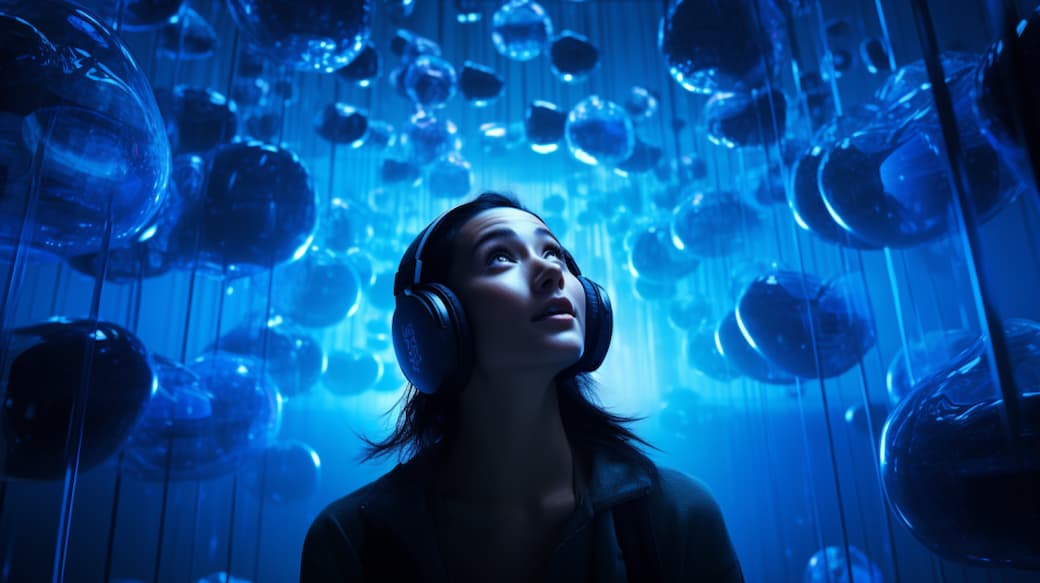
When flipping between u-BACCH and bypass, you really notice the flatness of regular stereo — for the most part, it really is just a line between your speakers. u-BACCH enhances not only the width but the entire plane surrounding you and your speakers.
In some cases, height is enhanced, but it has to be already present in the mix of course.
Any binaural processing is beautifully recreated without headphones and should reach accurately behind you depending on your listening environment.
Wrapping Up
Due to the nature of BACCH filters purifying the signal rather than upmixing it, the effect will naturally be content-dependent.
It seems that any stereo content, recording, or mix that was already impressive and immersive received a massive upgrade in soundstage, while those that were more narrow, crowded, or mono-heavy were more subtly enhanced.
That being said, there doesn’t appear to be any negatives in leaving the plugin on, and upon getting used to it, turning it off almost leaves the stereo image empty and sterile.
For those of you looking to try the u-BACCH plugin yourself, BACCH Labs offers a 14 day free trial upon download. Simply get the plugin from this affiliate link from BACCH Labs to get started.
If you decide to purchase, you can use my discount code, “MARTINSPATIAL10” for 10% off and use.
Conclusion transaural audio for the listener’s head
In conclusion, the world of audio production continues to evolve for more than just a localization experiment. With Transaural Audio and its related techniques and paper proposes paving the way for an immersive listening experience like never before.
With a foundation built on principles such as binaural signals, head-related transfer functions, and cross-talk cancellation, Transaural Audio has pushed the boundaries of what we can achieve with sound.
It’s not limited to an anechoic room or rarefied environments; it can be realized in everyday practice with two loudspeakers, influencing how we perceive and reproduce sound.
As we’ve seen, the evolution from traditional stereo loudspeakers to Transaural Audio and Binaural Audio is indicating the full potential of spatial audio, and it’s a journey that’s only beginning.
Embracing these innovative methods and solutions, we can create soundscapes that not only captivate our listener’s ears but also influence their responses in the course of audio presentation, opening new virtual doors to explore and redefine the possibilities of auditory perception.
So, let us continue to bridge the gap between what we hear and what we could hear, shaping the future of sound, one virtual response at a time.
Get in contact